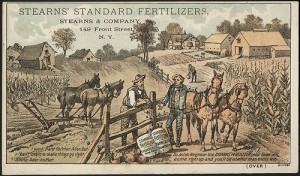 Many people think that spring is the optimal time to fertilize your lawn. It makes sense, right? The plants are just waking up and need a burst of nutrients to get them off to a good start. However, what you really need to focus on is fall lawn fertilization to keep your grass at its best. Choosing this time means that your grass roots will grow and strengthen themselves, improving the overall system. Fertilizing in spring (especially if that is the only time that you do it) is not as good since it encourages blade growth more, resulting in more mowing and potential problems.
Many people think that spring is the optimal time to fertilize your lawn. It makes sense, right? The plants are just waking up and need a burst of nutrients to get them off to a good start. However, what you really need to focus on is fall lawn fertilization to keep your grass at its best. Choosing this time means that your grass roots will grow and strengthen themselves, improving the overall system. Fertilizing in spring (especially if that is the only time that you do it) is not as good since it encourages blade growth more, resulting in more mowing and potential problems.
The first step you should perform before any fertilization is to do a soil test. You would run into trouble if your soil already happened to have had good (or a bit overabundant) levels of the main nutrients (N-nitrogen, P-Phosphorus, K-Potassium) and you added more unknowingly. This also helps you check the levels of other nutrients and make sure that you get the correct blend. Here in NY, you can contact the Cornell Nutrient Analysis Laboratory or the local Extension Service for testing.
Once you know that you should indeed add a round of fertilization, wait for the right window. If you maintain your lawn frequently, Cornell University advises that you should do a round of fertilization at a rate of one pound for every 1000 square feet in your yard around Labor Day and another in November before Thanksgiving. If your yard is a bit more low key, only the November feeding is necessary.
Know your first freeze dates and watch the weather. If you try to fertilize when it is warm in late fall, a cold snap that is likely around the corner will negate your efforts and even raise the potential of damage from freezing temperatures.
Image by Boston Public Library via a Flickr Creative Commons Attribution License


